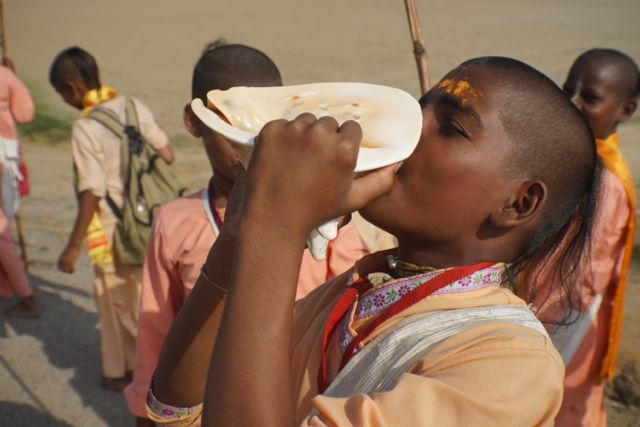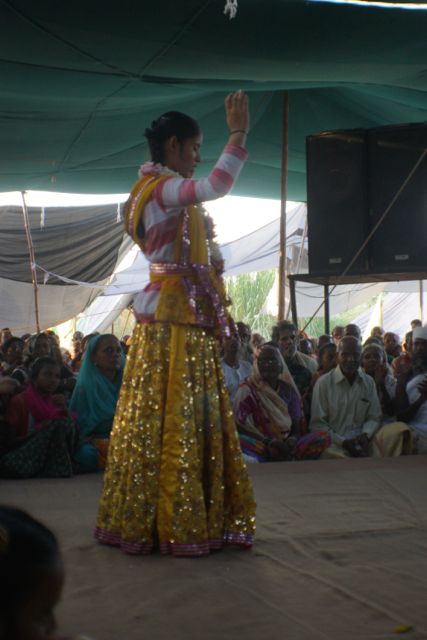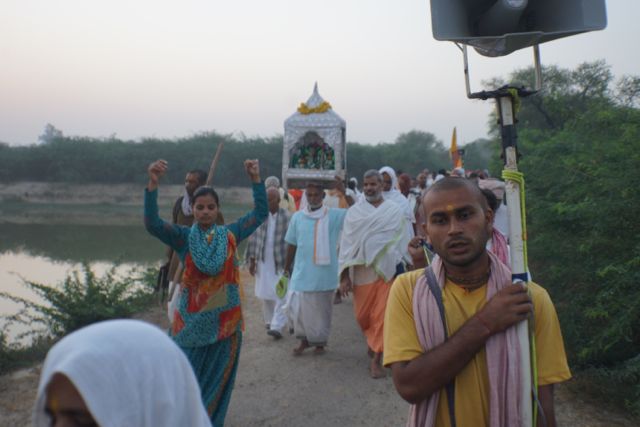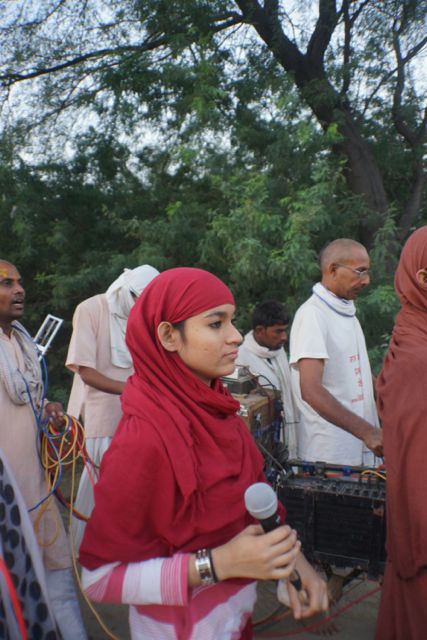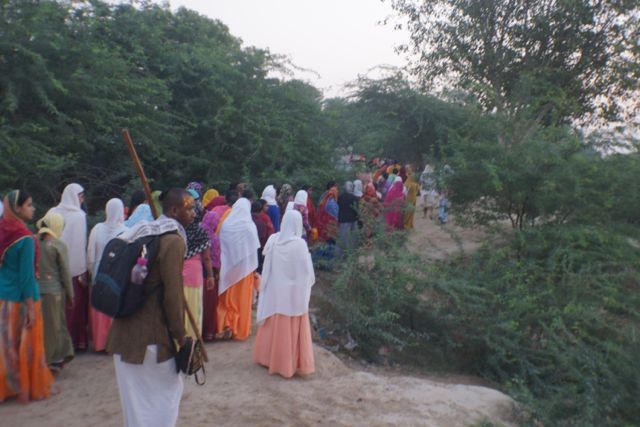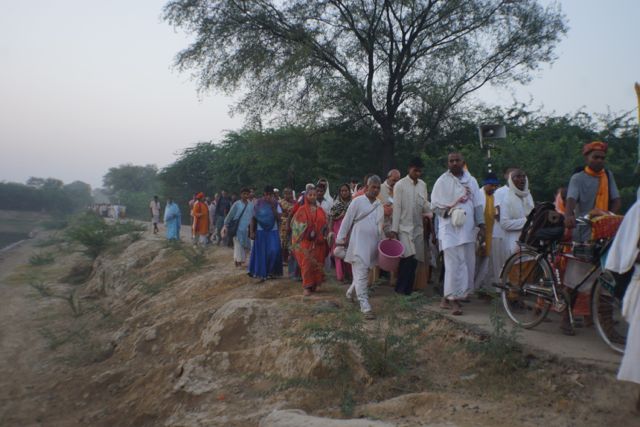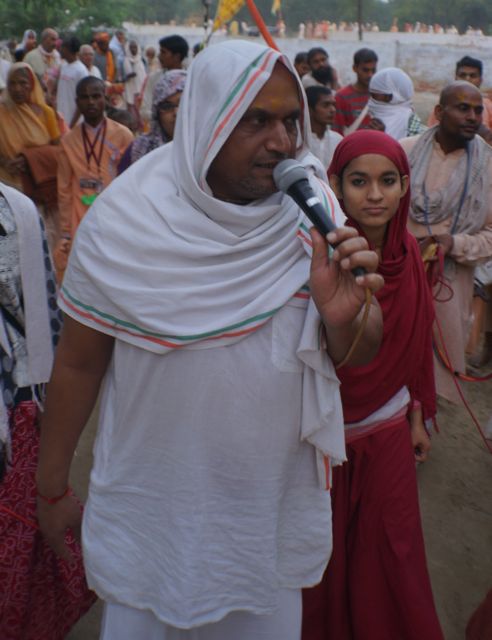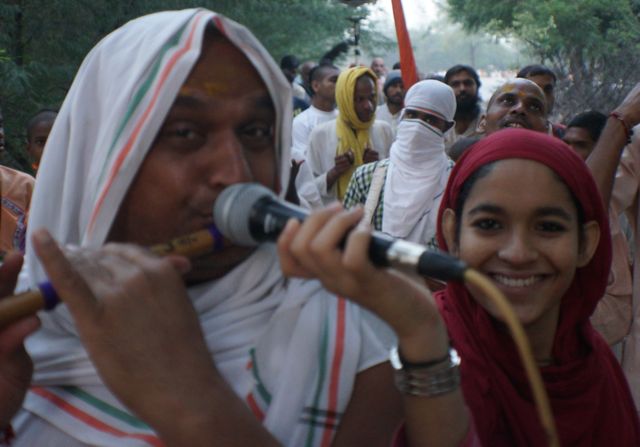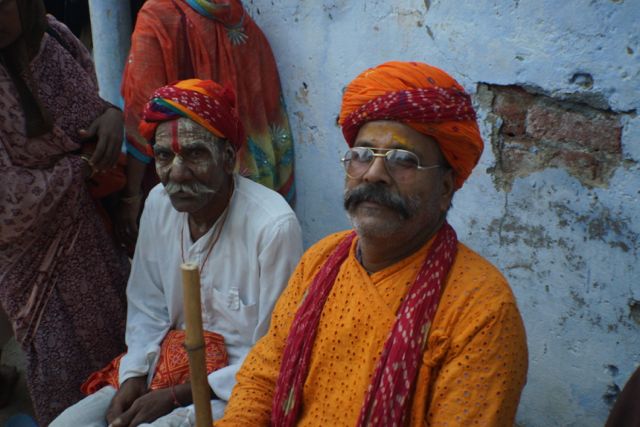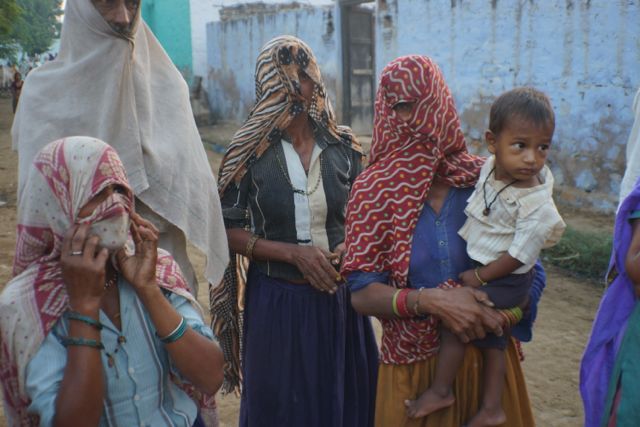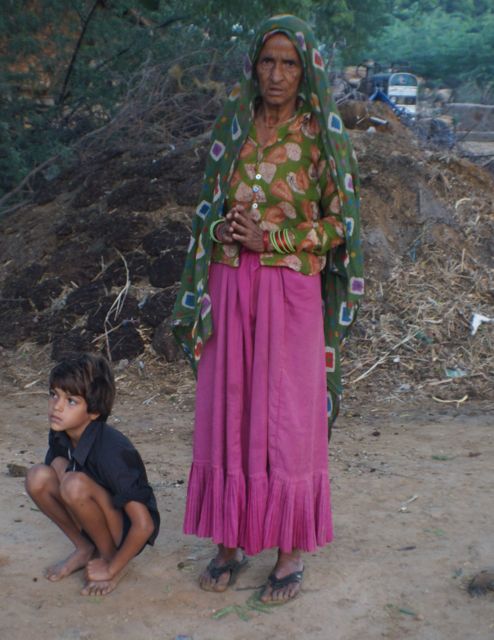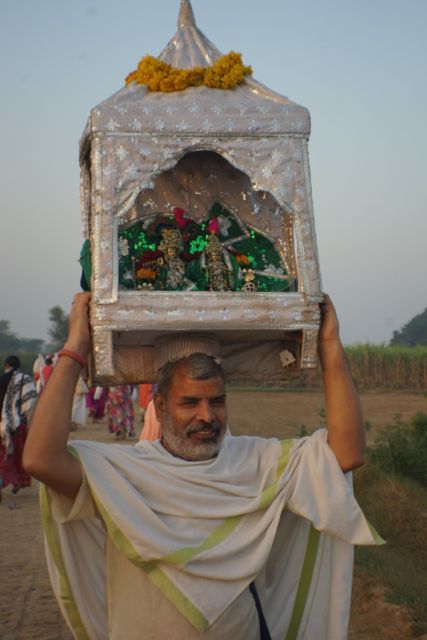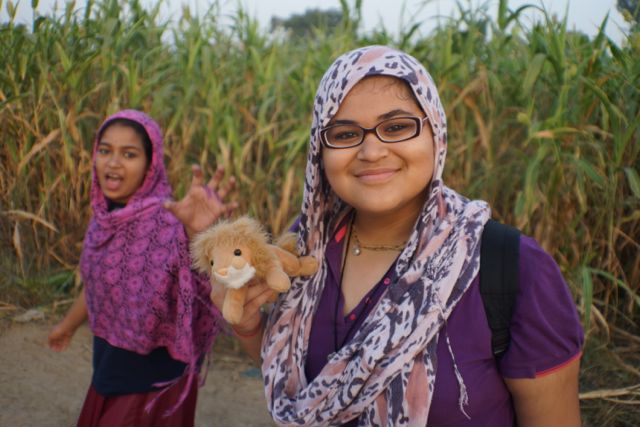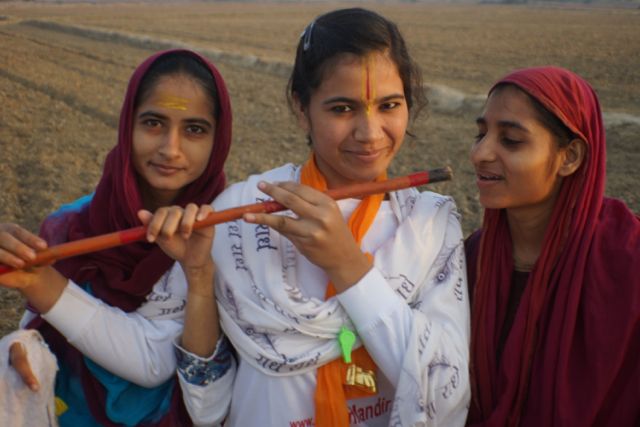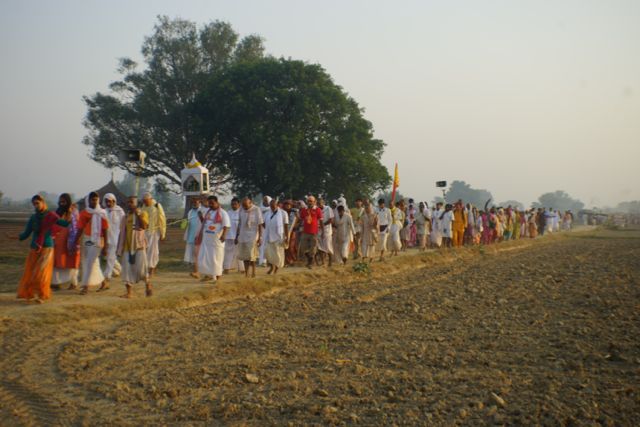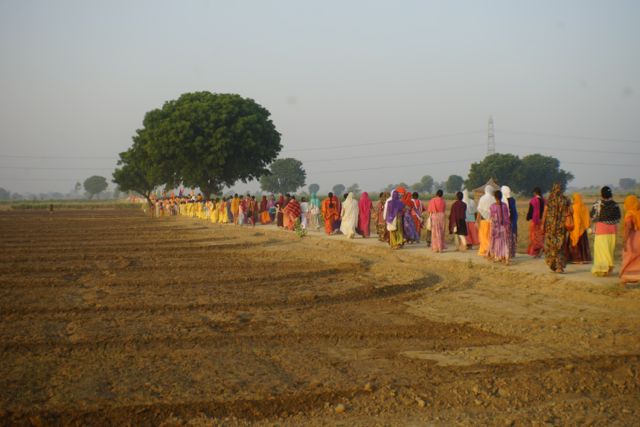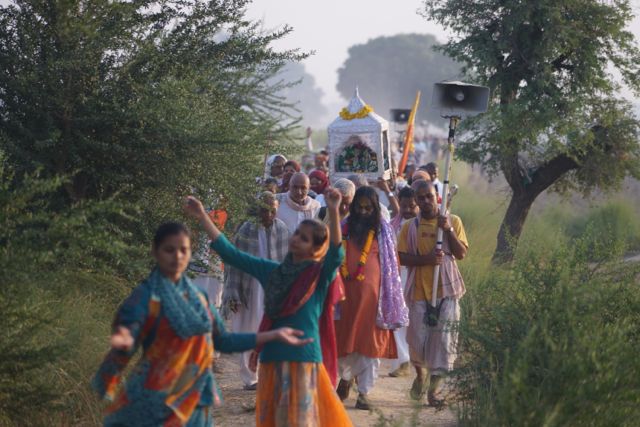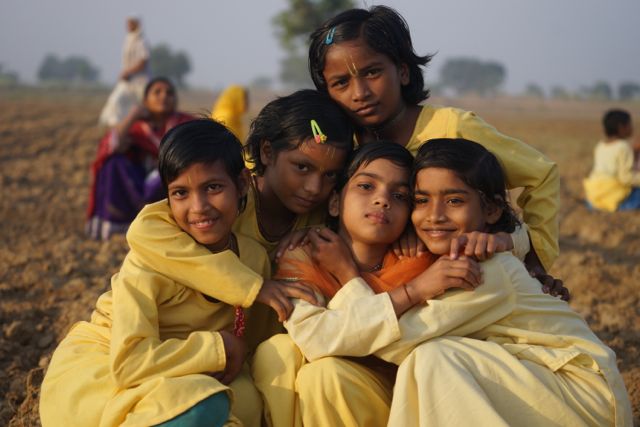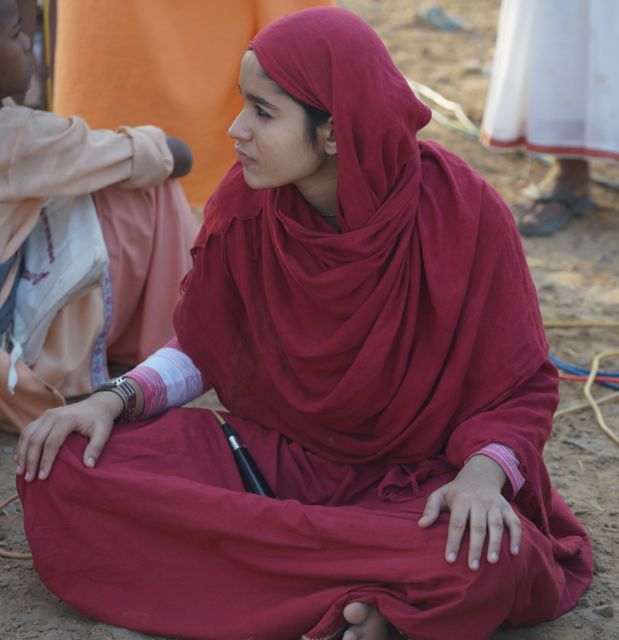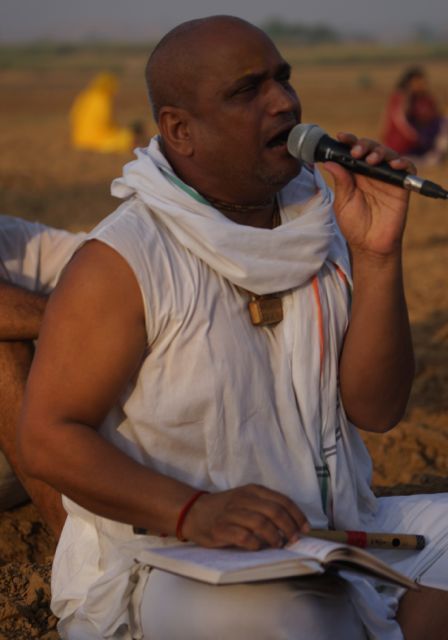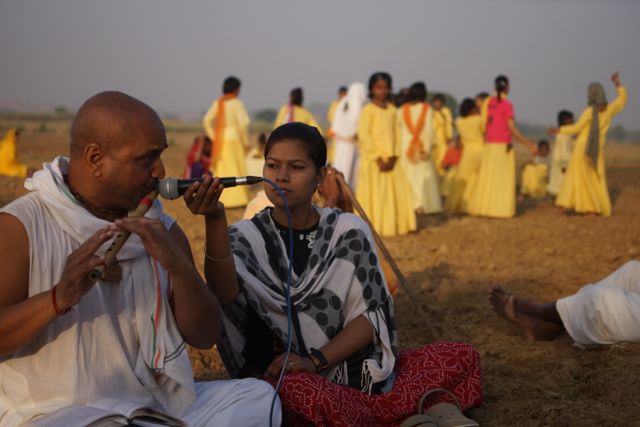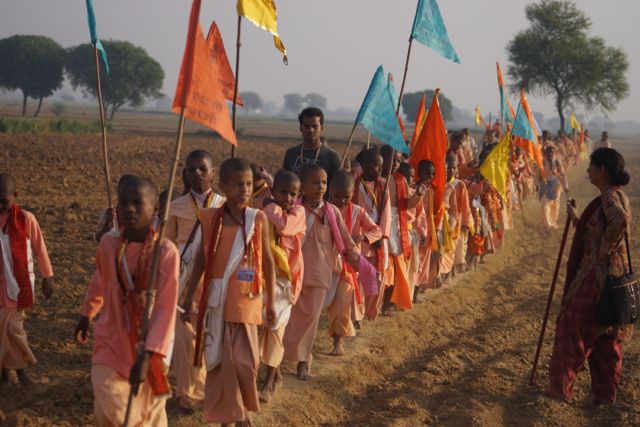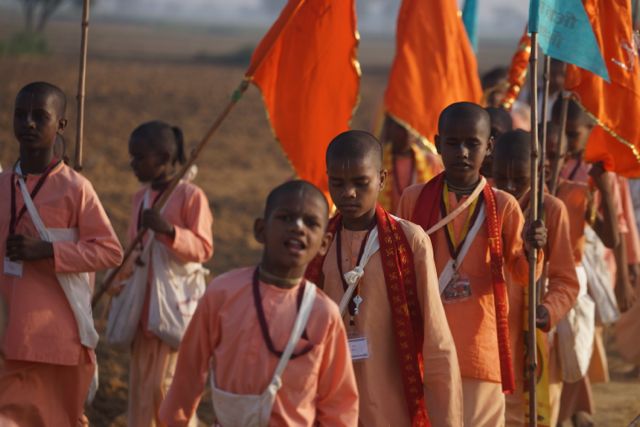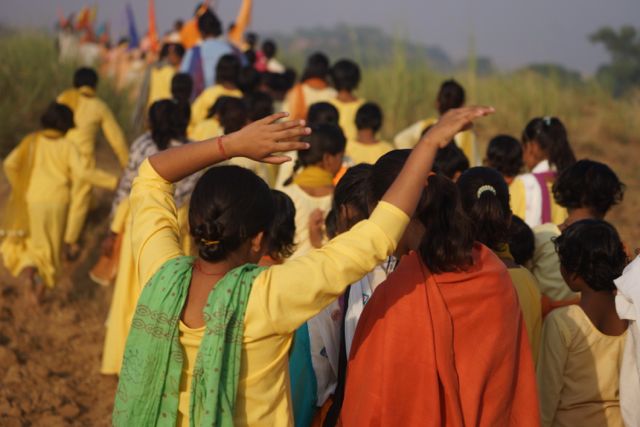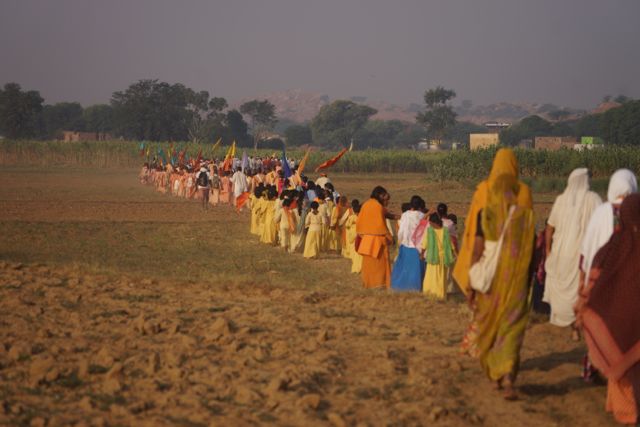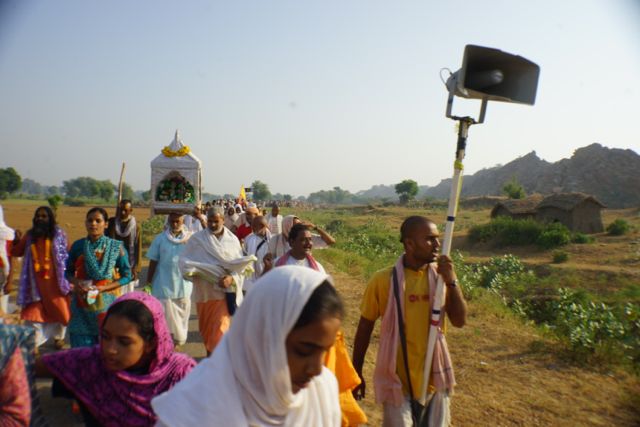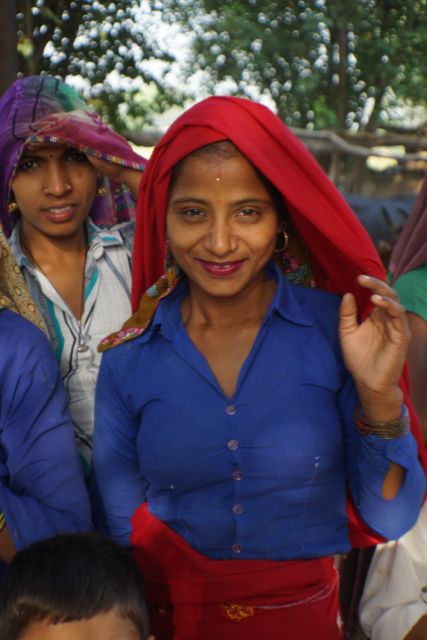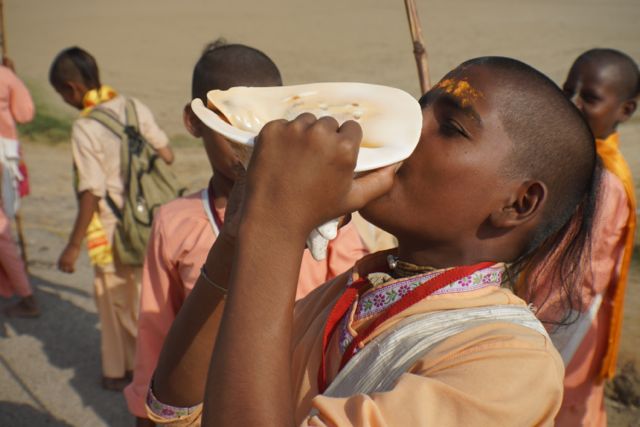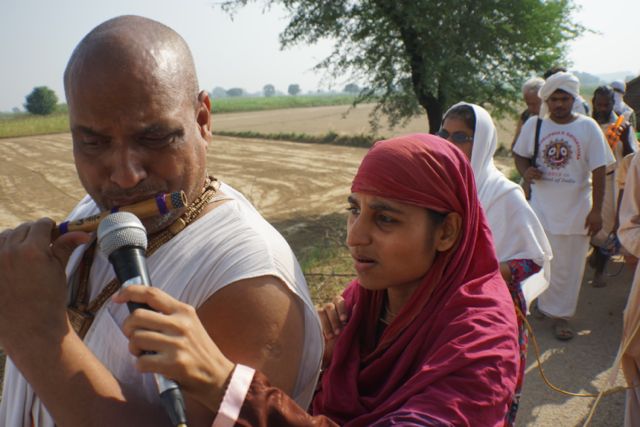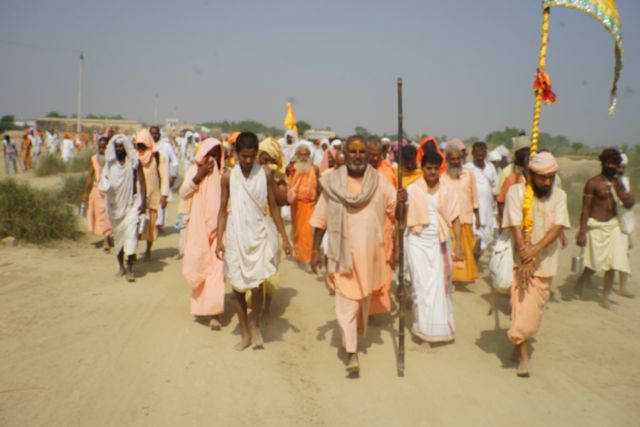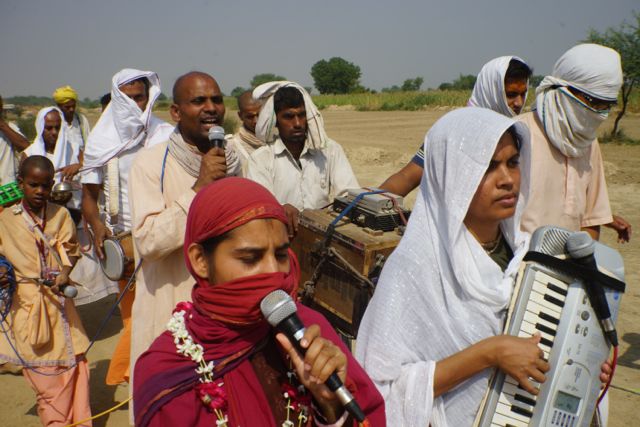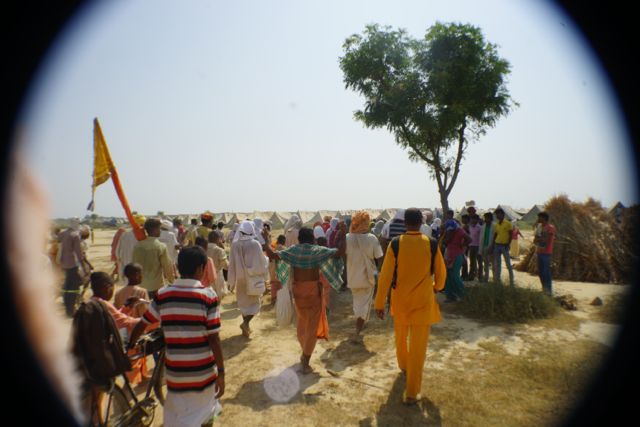Pawana Sarovara, Yaśodā Kunda, Nanda Karak( gosalla), Pani Hari Kuṇḍa, Charan Pahadi, Chach Kuṇḍa, Mor Kuṇḍa, Vrindadevi, Lowari, Levara:
Śrī Pāvana Sarovara
‘O Tirtharaja! You are vanquisher of devas’ difficulties. You bestow auspiciousness to Nanda and other gopas. To your holy form we offer our obeisnaces.’
‘In the middle of this pond is a well in Yaśodā’s name. Drinking its water, one can blessed to have a virtuous son like Kṛṣṇa.’
‘O grantor of a virtuous son! O holy well tirtha of Kamaseni’s daughter (Yaśodā)! We offer our respect to you and the gopīs.’
This place is very dear to Śrī Thakur ji. Śyāmasundar used to play in the water with the gopīs and while returning from gauchāran(caring for the cows), would quench the thirst of His dear cows Kajari, Bahula, Kapila, Kanchana, and Śyāma etc., He would take bath in the cool waters of this lake along with His friends. It is said that Vṛṣabhānu Bābā constructed one majestic palace for his dear daughter Śrī Rādhārāṇī on the northern bank, where She enjoyed playing with Her friends. Moreover, She rejoiced at the sight of Nandalala at this place. For Pāvana Sarovar it is said – even if a bird flies over this lake; liberation is guaranteed.
Various holy places, capable of granting salvation to all, come to Braja for their own salvation. According to ‘Braja Bhakti Vilasa’, at this Pāvana Sar, Bābā Nanda Raiji and Ma Yaśodā took bath together and on Kṛṣṇa’s birthday celebration, and donated a hundred-twenty-five thousand cows. Hence this lake’s glory is unparalleled. Taking bath and āchman of its water, releases one from the burden of all sins.
Yaśodā-kuṇḍa
Prayer Mantra
‘O Tirtharaj! May you grant us prosperity in this life and the Lord’s eternal abode thereafter. O reliever of the present and future! We offer our obeisances to you again and again.’
The kuṇḍa came to be known by Yaśodā’s name because she would take bath here daily, do her chores, making butter, and churning yogurt etc. Kṛṣṇa and Balarama would also follow mother along with Their friends, and being small naughty boys in Their play, were so disturbing to Yaśodā so she tried to scare them. She said, “If you continue your mischief then the Hau- Bilau bhuta (imaginary ghost) will come and take you away.”
Prayer Mantra
‘O grantor of Kṛṣṇa darśana and provider of the four objectives of human life (i.e., dharma, arthaḥ, kāma and mokṣa), established with Yaśodāji’s blessings, O Deva in stone form; we offer daṇḍavats unto thee.’ Śrī Kṛṣṇa would play all pranks at the pond and Ma, to control His naughtiness, would scare Him with Hau-Bilau (imaginary ghost). Little Kṛṣṇa immediately frightened, would hide in Ma’s saree. Ma is delighted with Hau’s impact and has a special affection for Hau-Bilau.
The boys being very afraid, would run to Nanda Bābā next door and tell him about the danger coming Their way.
Nanda Bābā would laugh as They both sat on each of his thighs. Mother Yaśodā would chastise Them and They would just run to the lap of the father for protection. There is a painting in the temple here that depicts this pastime. This is Nanda Bābā’s bhajan stali.
Bathing here grants prosperity and a permanent residence in Vaikuṇṭha thereafter.
Within the same area to Nanda Baitak and Yaśodā-kuṇḍa is the Yaśodā Mānt, a very large pot, a person can even stand in it, where she would make the butter.
Prayer Mantra
‘O sweet and nectarine curd-pot of Yaśodā! You bestow salvation even to devas, we offer our obeisances unto thee.’
Two pots are here. The bigger one is for curds and the other one butter. These pots are located near Yaśodā-kuṇḍa. Śrī Kṛṣṇa as vatspal (who cares for the calves) used to tend the calves on the outskirts of the village. At that time, Yaśodā would come with curds to this spot for His mid-day meal.
Nanda Bābā had an enormous gośala here and to this present day there is a beautiful gośala with well fed cows.
Kajal Kuṇḍa
Next comes Karelo vāna, Kajal-kuṇḍa where the gopis would put kajal on Kṛṣṇa’s eyes to make them more beautiful(that’s what they thought).
Panihari Kuṇḍa
The gopis used to bring drinking water for their homes, 3 kilometers from Nandagram. Sometimes Kṛṣṇa would hide on their way home and He would break their pots and splatter milk products all over them.
Kānāiya loves this pond. He doesn’t eat anything till he gets water from Panihari-kuṇḍa. He loves its soft, sweet water, so Ma Yaśodā herself goes to fetch a big potful of this sweet water for her dear Kanha.
Not only Kṛṣṇa, rather all Brajabāsins satiate their thirst with its cool, clear water. In the evening, many groups of gopīs, gossiping, (center of their all gossip and actions is only one – Kanha), can be seen going to Panihari Kuṇḍa with pots on their heads.
Charan Pahadi
This is Sri Charan Pahadi, which is on the north side of Bathan and from here it is only one and a half kilometers to the North. This particular Charan Pahadi description is available in the Garga Samhita, Vṛndāvana khāṇḍa, chapter 24, sloka 16 and 24.
When Kṛṣṇa performed the rasa lila, and disappeared from the rasa mandap at that particular time, the gopis were crying and searching for Kṛṣṇa throughout the entire forest of trees, plants, wells, flowers, and bees. They were inquiring from everyone, “Did you see Kṛṣṇa? Have you see Kṛṣṇa?” They were so intoxicated looking for Kṛṣṇa, they were mad, completely mad.
At that particular time they came here and finally saw the lotus feet of Lord Kṛṣṇa on this particular hill within this forest. That is why it is called Charan Pahadi.
Garga Samhita
16 tatastutatprasadenapadachanadarsanata|
dadasugaratadagopyobhagavatapadachinitam||
24 tada raja satanitva dhutwa murdana brajangama/ padanyananidadushruranyachinannicha||
Kṛṣṇa, along with the cowherd boys, came on this hill along with Surabhi, the mother cow, Airāvata, the elephant, and Turanga(one horse). They all came here and heard the flute of Kṛṣṇa. And even the earth planet, by hearing this flute melted, the stones began to liquefy.
The impressions of the lotus feet of the Lord are clearly on this hill, that’s why it is called Charan Pahadi. Next to them, Lord Śyāma’s and Rāmā’s(Balarāma) cowherd stick indentations are clearly seen.
Also one will find the hoof prints of cows, the cowherd boys, elephant, horse, deer, and parrots in the stone.
Close by Charan Pahadi, all the gvalbals(cowherd boys) used to do pada paksanam(bathe Lord Kṛṣṇa and Balarāma’s lotus feet). That is why this kuṇḍa here is called Charan Ganga. On the bank here is a beautiful Lakṣmī-Nārāyaṇa temple.
In the Bhagavatam also, Śukadeva Gosvami has described the pastimes of Charan Padi in the 10th canto, 30th chapter 25th verse;
padāni vyaktam etāni
nanda-sūnor mahātmanaḥ
lakṣyante hi dhvajāmbhoja-
vajrāṅkuśa-yavādibhiḥ
[The gopīs said:] The marks of a flag, lotus, thunderbolt, elephant goad, barleycorn and so forth on these footprints clearly distinguish them as belonging to that great soul, the son of Nanda Mahārāja.
Chach Kuṇḍa
Since there were so many cows, there was so much butter, milk and yogurt everywhere. There used to be a kuṇḍa where the chach would be stored.
Mor Kuṇḍa
Just as Kṛṣṇa took the form of a peacock at Mor Kuti in Barsana and would dance to give pleasure to Śrīmatī Rādhārāṇī, similarly at this kuṇḍa Kṛṣṇa took the form of a peacock for the pleasure of his friends, His śākhas.
Vrinda Kuṇḍa
This Kuṇḍa is a glorification to Vṛndā Devi.
There have been many Vṛndā Devis:
1. Tulasī , King Kushadhvaja’s daughter, was known by the name ‘Vṛndā’. She was married to Shankhachuda – a partial incarnation of Śrī Kṛṣṇa. This story appears in ‘Br. Vai. Pu. K. J. Kh – 17.
2. Jalandhar’s wife too was Vṛndā.
3. The presiding deity of Vṛndāvana is also Vṛndā sakhī.
4. One Vṛndā is daughter of King Kedar.
Usually there is a confusion over which Vṛndā is being refered to here.
This has been clearly explained below:
A little further from Charan Pahari, visible from quite a distance in north, midst of tall trees is the abode of Vṛndā, Kedar’s daughter.
According to Brahmāvaivarta Purāṇa, Kṛṣṇa Janam-khāṇḍa, chapter 86, Śrī Thakurji narrated this wonderful story to Nanda Bābā. In a previous period, from Brahmā’s son, Uttanpada was born to Swambhuva, from him Dhruva, and from Dhruva, Nandsavarni was born. Mahārāja Kedar was Nandisavarni’s son.
He was a Raja Ṛṣi (devout, scholarly king). He used to feed the Brahmins, donating cows every day, performing all actions as an offering to Lord. One day, Lakṣmīji appeared from his sacrificial fire as a divinely beautiful girl; with an aspiration to marry Śrī Kṛṣṇa, she proceeded to a forest on the banks of holy Yamuna for performing tapas. The same land of her tapasya came to be known as Vṛndāvana. Brahmāji, pleased with her austerities, came to bless her, ‘O beautiful girl! You will certainly achieve your goal very soon.’ Later, he deputed Dharmarāja to test the integrity of her aspiration.
Dharma came to her as a handsome young brahmin and asked Vṛndā, ‘O lovely damsel;! What is the objective of your ardent austerities? I am capable of granting your wish, ask, what you want?’
Vṛndā replied humbly, ‘O Supreme brahmin! My sole objective is to marry Śrī Kṛṣṇachandra.’
Dharma said, ‘O beautiful girl! To have the Supreme Personality of Godhead as your spouse is impossible. Only Rama and Sharda have succeeded, none else. And the One who resides in Goloka, His sublimely beautiful eternal partner, His inner potency, Śrī Rādhārāṇī resides in His heart.’
Śrī Kṛṣṇa has two forms –
As Golokadhipati, with two arms; as Vaikuṇṭhadhipati, with four arms (chaturbhuja).
‘Leave aside Indra, Brahmā whose age is just a small fraction of His time-scale, Sanakadi, all their life remain engaged in remembrance of That all-pervading Lord, Sesa with his thousand mouths constantly sings His glory; all of them are still unable to attain Him.’
‘O Vrinde! How will you attain him?’ he continued, ‘When that Brahmān is unattainable by you, why don’t you marry me!’
Hearing his words, Vṛndā got so angry that she pronounced curse upon him.
Vṛndā, ‘You lecher, boastful brahmin! My dharma is my protector. You have uttered such shameful, highly condemnable words before me.
Since brahmins are not to be killed, I curse you –
‘kshayo bhava! Kshayo bhava! Kshayo bhava!’ (Be destroyed! Be destroyed! Be destroyed!)
She said it thrice, and was about to say it the fourth time, Sun god appeared and stopped her from so saying. He said, ‘Devi! He is Dharmarāja himself who had come to test your integrity. With his destruction, dharma in this world will be destroyed. Therefore, grant him life.’ Dharma’s wife Murti with her head bowed down in shame, prayed for her husband’s life.
Lord said to Vṛndā, ‘O beautiful girl! You have performed tapas for 108 yugas; you have attained a long life. Now donate your life years to Dharma and proceed to Goloka.
In Varaha kalpa, you will be born in Śrī Rādhā’s image as Vṛṣabhānu’s daughter, and will marry my part incarnation Rayan Gopa.
The sinful, disillusioned people will consider you as real Rādhā, though Rādhā is my eternal partner and without Her grace, Her darsana is inaccessible.’
After listening to Lord’s delightful sweet words, Vṛndā gave her life-years to Dharma and instantly Dharma stood up. Vṛndā proceeded to Goloka. The infallible curse, which Vṛndā had pronounced thrice, that too manifested as –
In Satya yuga, Dharma was replete, but in Treta yuga, was left with only three legs; in Dvāpara, two legs remained, and in the beginning of Kali yuga just one leg will remain; towards the end of Kali, this too will diminish in the last 16th part of Kali.
Rejoicing in the bliss of Yugal’s manifest līlā, Śrī Vṛndā Devi is established here in Nandagaon as Vanadevi. In front of the Temple, a scenic pond exists, in which she would bathe. This is known by her name ‘Vṛndā Devi Kuṇḍa’.

